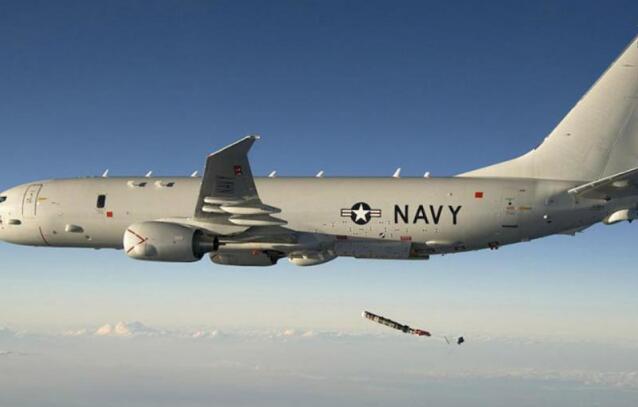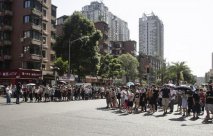
Yu Zeyuan Beijing Report
The risk of military conflicts in China and the United States is still rising.According to the news released by the South China Sea Strategic Scenic Plan Platform of the Peking University Institute of Marine Research, a P-8A maritime patrol aircraft affiliated to the US Navy appeared on the East China Sea on July 26. During this period, it once flew to a position of about 76 kilometers from the Fujian coast.This may be the closest time for the US military reconnaissance aircraft to fly away from the Chinese coast.
The US military reconnaissance aircraft has recently been close to the coastal activities of China, and the US aircraft carrier battle group has recently conducted drills in the South China Sea.At the same time, the Chinese army has also strengthened military exercises in the South China Sea.The Navy Aviation Soldiers of the PLA's southern theater will organize real bombs on the west of Leizhou Peninsula on July 25. At present, dozens of airplanes have been dispatched. Thousands of mines such as rocket bullets, artillery shells, and air training bombs will continue. The exercise will continue until August.2 days.
The Chinese military announced the day before yesterday that the southern theater naval aviation fighter aircraft was flying at low altitudes in the exercise and cracking down on maritime targets. A secondary weapon must be used to test the strength of pilots.The exercise passed the target of the sea target, and inspected the comprehensive combat performance of weapons and equipment, and improved the emergency response ability of the army.
Analysis: China is determined to deal with conflicts in the South China Sea
Analysts believe that this exercise time has a long span. The exercise subjects include crackdown on sea and sea and air interception. It may also use advanced medium -to -long -range anti -ship missiles, showing that China is determined to deal with military conflicts that may explode in the South China Sea.
On the other hand, the editor -in -chief of Global Times Hu Xijin continued to call on China to quickly make nuclear weapons, emphasizing that China has a stronger nuclear arsenal is the most critical code to suppress the arrogance of the United States under a security line.
Hu Xijin believes that Washington's attitude towards China may not have a significant improvement after the US election. China must make a good preparation for the next step in the United States to risk China.
In May of this year, Hu Xijin called on China to expand the number of nuclear warheads to a level of thousands in a short period of time, including at least 100 Dongfeng-41 strategic missiles.
However, some scholars believe that compared with tactical response, China should strategically resolve the crisis of Sino -US relations.
Sun Liping, a professor of sociology at Tsinghua University yesterday, said yesterday that due to the advantages of the United States in terms of science and technology, military, finance, etc., the United States is completely possible to seek a strategy that is not a decisive battle immediately, but turns it into a long -lasting consumption war war., Forced China to enter its designed traps.In the process, China will be passive everywhere and poverty to cope.
Sun Liping believes that what China needs to do is not to deal with, but to crack.The more accurate response to the tactical level, the greater the losses at the strategic level, the more passive it is.The cracking is to get out of the dilemma with a higher intention, get rid of this dilemma, and strive for a broader prospect.
The article said that in the early days of reform and opening up, China was also very passive.However, under the time, China's choice was not to deal with the so -called challenges, but to take a different approach to resolve the dilemma with reform and opening up.History can give us beneficial revelation.



